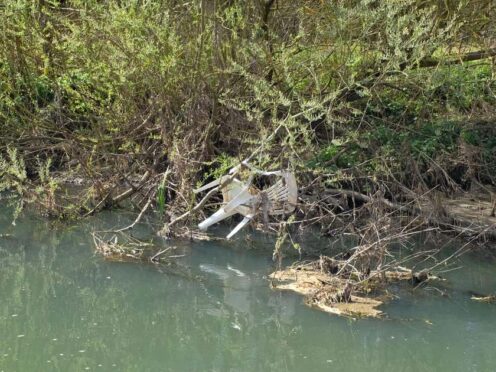The revelation that sewage was spilled into rivers and the sea for 3.6 million hours last year is the latest data to highlight the crisis facing England’s waters.
The figures relate to England’s storm overflows, which dump untreated sewage into rivers and the sea, usually during heavy rainfall to stop sewers backing up and which are now all monitored by water companies.
Much of the country’s sewer network combines sewage with surface water from roofs and drains, so they can discharge through overflows in heavy rainfall to prevent the sewers being overwhelmed and backing up into houses.
Figures published by the Environment Agency show there were 464,056 spills in 2023, up 54% from 301,091 in 2022, which the organisation said was partly due to England experiencing its sixth-wettest year on record.
The latest data show duration of sewage spills had more than doubled from 1,754,921 hours hours in 2022, to 3,606,170 hours in 2023.
Both the frequency and duration of spills were also up on 2020 levels, which saw comparable amounts of rainfall, although the number of monitored storm overflows had also increased in that time.
There were an average of 33 instances of sewage spills per storm overflow in England last year, up from 23 in 2022.
This is the second highest annual average since data began in 2016, with the highest being 35 spills per overflow in 2019.
The figures add to the stark picture painted by the data of the pollution crisis in England’s rivers, lakes, streams and coasts, which are facing a perfect storm of creaking water infrastructure, intensive farming, a growing population and climate change.
Water companies say they are investing in tackling pollution from storm overflows and sewage infrastructure, but have faced criticism over profits, bonuses and the way the businesses are managed.
Other data for 2023 reveals that while 96% of designated bathing waters met minimum standards for clean water across the summer swimming season, 18 spots failed to do so, and 66% met excellent standards.
However, even beaches rated as excellent can be hit by pollution from storm overflows after bad weather, causing warnings against swimming to be issued on multiple occasions.
There were 3,800 such pollution risk forecasts issued by regulators across the UK in 2023, according to Surfers Against Sewage, with around 100 on Blackpool’s popular beaches alone.
Data also show none of England’s rivers are in good overall health and (23%) are classed as in poor or bad overall condition, according to an assessment based on the combination of their chemical pollution and “ecological” state, which measures the health of aquatic plants, fish and insects.
All English rivers are failing on chemical health and just 15% of stretches of waterway are in a good ecological state, according to a recent report from the Rivers Trust based on official data gathered in 2022.
Figures from the Environment Department (Defra) show that wastewater is responsible for 36% of pollution affecting rivers and lakes, while 40% is down to runoff of pesticides, fertilisers, slurry and soil from farming.
Pollution also comes from towns, cities and roads.
It is not just what is going into rivers and lakes, but what is being taken out, with growing pressure put on waterways from abstraction for drinking water, agriculture and industrial processes, while many water bodies are affected by weirs, dams and channelling which stops them functioning properly.
And climate change poses a growing threat to freshwater habitats and the coasts – as well as our water supplies – with heatwaves, droughts and heavy rainfall episodes all increasing in intensity and frequency.
